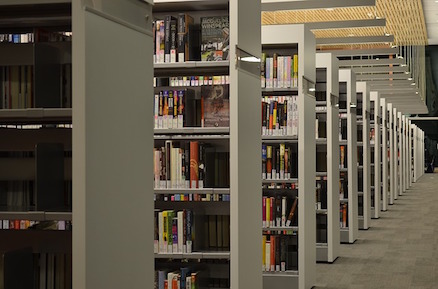All students should graduate from high school ready for college, careers, and citizenship.

States, advocacy organizations, and funders pledge their support for the increased availability of high-quality open educational resources (OER) aligned to state academic standards.

To help illustrate the broad array of states and organizations that support and have made high-quality, standards-aligned OER a priority, Achieve is joined by states, partner organizations, and funders in signing the following letter. This letter of support outlines the need for high-quality resources and the benefits that OER can provide to support states and districts as they go about college- and career-ready standards implementation. If your state or organization is interested in signing this letter, please contact Hans Voss at hvoss@achieve.org or 202-745-2309.
Letter of Support for High-Quality, Standards-Aligned Open Educational Resources
A large amount of Open Educational Resources (OER) currently exist online and many more are being developed all the time. Many states, districts, and schools have found that OER offer a low-cost solution with high potential to assist teachers nationwide in helping students meet the demands of higher standards. Improving the availability of high-quality instructional materials aligned to college- and career-ready standards, including the Common Core State Standards, can also help ensure quality instruction occurs in the classroom. OER can fill this need for better materials, especially OER that have been reviewed for quality and alignment using criterion-based tools. As leaders in state education agencies, nonprofit advocacy organizations, and foundations, we understand the need for better quality, fully-aligned instructional materials to support the implementation of these college- and career-ready standards. We furthermore understand the benefits of using materials that can be modified by teachers to better engage and meet the specific needs of diverse learners, thereby increasing local control of curricular materials as well as sharing of openly-licensed materials across schools, districts, and states. We join in supporting the use of high-quality and standards-aligned OER instructional materials in the implementation of college- and career-ready standards. We also support the use of rigorous review processes, using rubrics and other criterion-based tools to ensure the quality and alignment of OER to these new, higher standards. OER that are aligned to college- and career-ready standards can support learning that includes critical thinking and complex problem-solving, collaborative work and effective communication from students. Finally, when public funds are used, the instructional materials created should have open licenses, such as Creative Commons licenses. High-quality and standards-aligned OER have the benefits of:
- Increasing local control and allowing teachers to make instructional materials work best for them. By offering educators the technical ability and legal rights to modify materials, resources that teachers use with students can be revised to fit local contexts in classrooms and support personalized learning. OER can be customized to provide additional explanation or practice or to offer additional supports for students with particular needs.
- Reducing costs of instructional materials. Open licenses ensure that OER can be shared easily and at very little cost for the materials themselves, even when printed. In digital or print, OER can be updated more easily than traditional materials, to reflect improvements that would benefit classroom instruction. Additionally, funds saved by using OER can be shifted to support educators, e.g., through professional learning, technology resources, etc.
- Ensuring that high-quality resources are shared broadly and easily. In an age when schools are shifting to digital resources, the best resources can be shared without infringing upon the copyright restrictions that traditionally licensed materials may have. This includes sharing within a district, across districts, and across states.
- Improving the availability of quality instructional materials. OER can improve the ability of educators to share quality and aligned materials they find, or even materials they create themselves to meet the specific needs of their classrooms. Furthermore, teachers can collaborate easily on OER and benefit from the expertise of their colleagues.
- Increasing educator capacity. Training educators using rubrics and other tools to evaluate the quality and alignment of OER has the ability to increase capacity across schools and districts. Teachers can use these skills to evaluate other materials, and high-quality aligned OER can be shared easily, thereby reducing time spent by other teachers seeking out quality materials.
Signatures
- Achieve
- Core Knowledge Foundation
- The Council of Chief State School Officers
- Creative Commons
- The Institute for the Study of Knowledge Management in Education (ISKME)
- The Learning Accelerator
- Louisiana Department of Education
- The Military Child Education Coalition
- Minnesota Department of Education
- North Carolina Department of Public Instruction
- Open Education Consortium
- Oregon Department of Education
- The Prichard Committee for Academic Excellence
- The Sheri and Les Biller Family Foundation
- Washington Office of Superintendent of Public Instruction
- The William and Flora Hewlett Foundation
